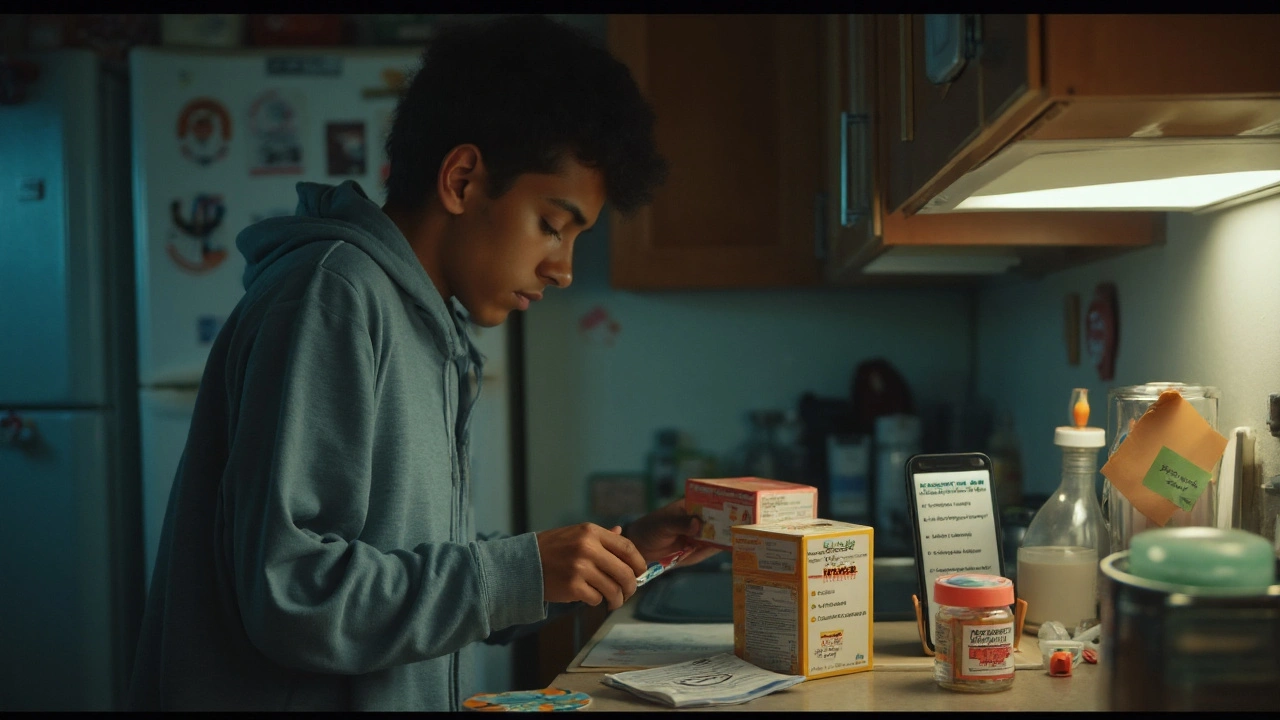OTC Safety: Your Quick Guide to Safe Over‑The‑Counter Medications
Over‑the‑counter (OTC) medicines are handy, but they’re not foolproof. A few simple habits can keep you from unwanted side effects and wasted money. Below you’ll find the everyday steps that make OTC use as safe as possible.
Read the Label Like a Pro
The label is more than a brand name and a picture. Start by spotting the active ingredient, the strength, and the recommended dose. If the label lists max daily dose, stick to it – it’s there for a reason. Look for warnings about age limits, pregnancy, or pre‑existing conditions. Those boxes are often ignored, but they can prevent a serious reaction.
Don’t forget the inactive ingredients. Things like acetaminophen show up in many pain relievers, cold pills, and even some allergy meds. Taking two products with the same inactive ingredient can push you over the safe limit without you realizing it.
Avoid Dangerous Interactions
Before you grab that extra bottle of ibuprofen, check what you’re already taking. A quick glance at a drug interaction chart (or a pharmacy app) tells you if two meds clash. For instance, mixing NSAIDs with blood thinners can increase bleeding risk. The same goes for antihistamines and certain antidepressants – they can make you unusually drowsy.
If you’re unsure, a five‑minute chat with the pharmacist can save a lot of trouble. They can spot hidden combos and suggest safer alternatives, like a non‑NSAID painkiller for someone on blood thinners.
When a doctor prescribes a prescription drug, ask if any OTC options are safe to use alongside it. Sometimes the answer is “no” or “only at a reduced dose.” Ignoring that advice can turn a harmless cold remedy into a health hazard.
Another common mistake is using OTC meds as a long‑term fix. If you find yourself reaching for the same cough syrup or pain reliever week after week, it’s a signal to see a healthcare professional. Persistent symptoms often need a deeper look.
Storage matters, too. Keep medicines in a cool, dry place away from sunlight. Heat and moisture can break down the active ingredients, making them less effective or even harmful. Also, keep them out of reach of kids – many accidental poisonings involve easily grabbed OTC pills.
When it’s time to toss old meds, don’t just throw them in the trash. Many pharmacies offer take‑back programs, or you can follow local guidelines for safe disposal. This prevents accidental ingestion and protects the environment.
Finally, if you ever feel odd after taking an OTC product – sudden rash, trouble breathing, or unusual dizziness – stop using it and seek help right away. Those reactions are rare, but catching them early makes all the difference.
By reading labels, checking interactions, storing meds properly, and knowing when to ask for help, you can enjoy the convenience of OTC medicines without the worry. Stay safe, stay informed, and let your health choices work for you.
Self‑Medication: Where to Draw the Line? Safe OTC Use, Red Flags, and When to See a Doctor
Posted by Kayla Susana on Sep, 6 2025

Clear rules for safe self-medication: what you can treat at home, red flags, dosing limits, interactions, and when to get care-practical 2025 guide.
